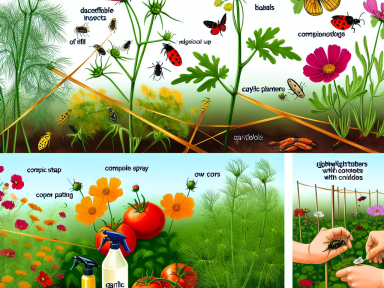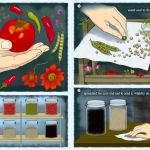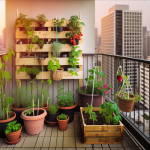The Importance of Natural Pest Control
Using natural pest control methods in your garden not only helps protect the environment but also enhances the quality of your plants. Chemical pesticides might offer quick fixes, but they can harm beneficial insects, soil health, and eventually, the ecosystem. Here’s an in-depth look into some effective natural pest control techniques for a thriving garden.
1. Beneficial Insects
The introduction of beneficial insects is one of the best ways to combat harmful pests. Here are a few key beneficial insects to consider:
- Lacewings: These insects prey on aphids, caterpillars, and other small insects. Plants like dill and coriander can attract lacewings.
- Ladybugs: A favorite among gardeners, ladybugs can consume hundreds of aphids daily. Attract them with flowers like marigolds and cosmos.
- Parasitic Wasps: These wasps lay their eggs inside the bodies of pest insects. Grow nectar-rich flowers like dill and fennel to attract them.
2. Companion Planting
Companion planting involves the strategic placement of plants to deter pests and improve growth. Notable combinations include:
- Tomatoes and Basil: Basil repels flies and mosquitoes, protecting your tomatoes.
- Carrots and Onions: Onions repel carrot flies, and carrots can help ward off onion flies.
- Chives and Roses: Chives can deter Japanese beetles from your rose bushes.
3. Homemade Sprays
Homemade sprays can be effective and eco-friendly. Here are a few recipes:
- Garlic Spray: Crush several garlic cloves and mix them with water. Let it sit overnight, strain, and spray on plants to deter aphids and caterpillars.
- Neem Oil: Mix neem oil with water and a few drops of liquid soap. This can help control a variety of pests including mites, aphids, and whiteflies.
- Soap Spray: Mix a mild liquid soap with water. Spray on plants to eliminate soft-bodied pests like mites and aphids.
4. Barriers and Traps
Physical barriers and traps can offer direct protection without chemicals:
- Copper Tape: Slugs and snails receive a mild electric shock touching copper, preventing them from crossing onto your plants.
- Sticky Traps: These colored traps can attract and capture flying pests. Yellow sticky traps are particularly effective for whiteflies.
- Row Covers: Lightweight fabric covers protect plants from insect pests while allowing air, light, and moisture to reach them.
5. Crop Rotation
Rotating crops each season prevents pests from becoming established. By planting different crops in the same spot each year, you disrupt the life cycle of soil-dwelling pests and diseases.
6. Soil Health
Healthy soil promotes vigorous plant growth, making plants less susceptible to pest attacks. Enrich soil with organic matter such as compost and aged manure. Beneficial soil organisms help keep pest populations in check.
7. Hand Picking
Some pests can simply be picked off by hand. Early morning is often the best time to spot pests like beetles and caterpillars. Drop them into soapy water to dispatch them.
By integrating these natural pest control methods, you create a garden that’s healthier for both plants and the environment. These practices not only manage pest populations but also foster a biodiverse and resilient ecosystem.




GIPHY App Key not set. Please check settings